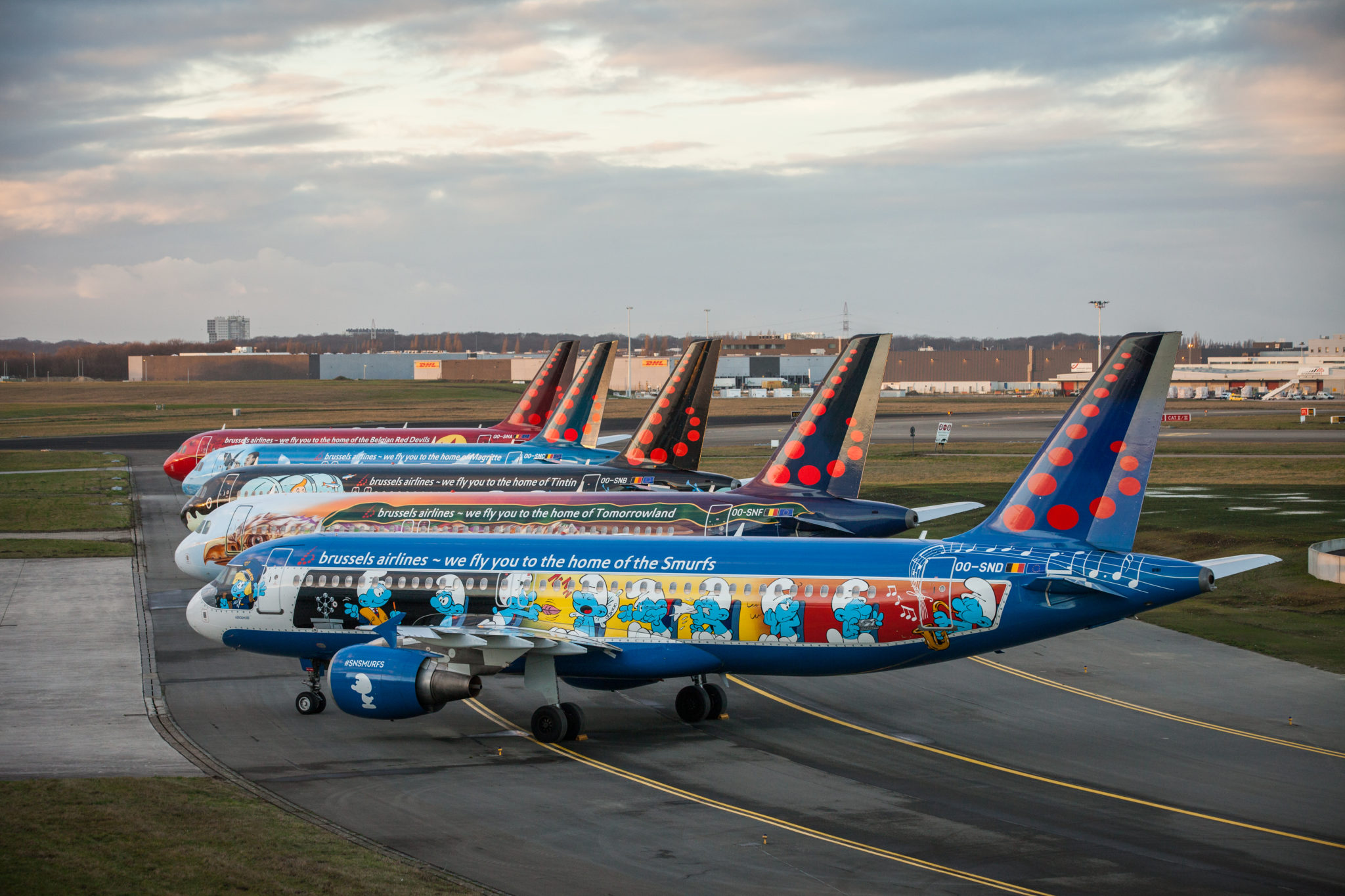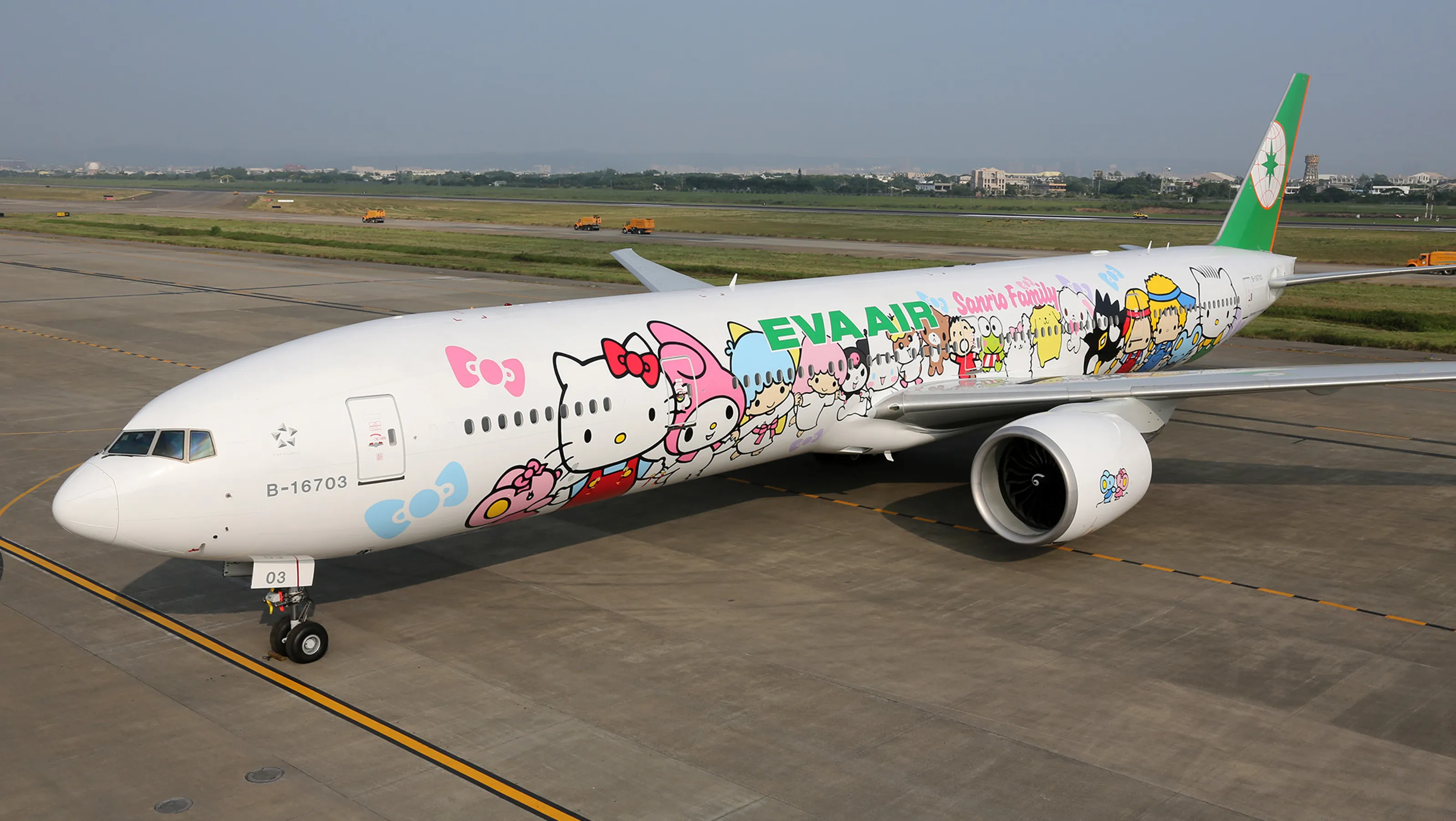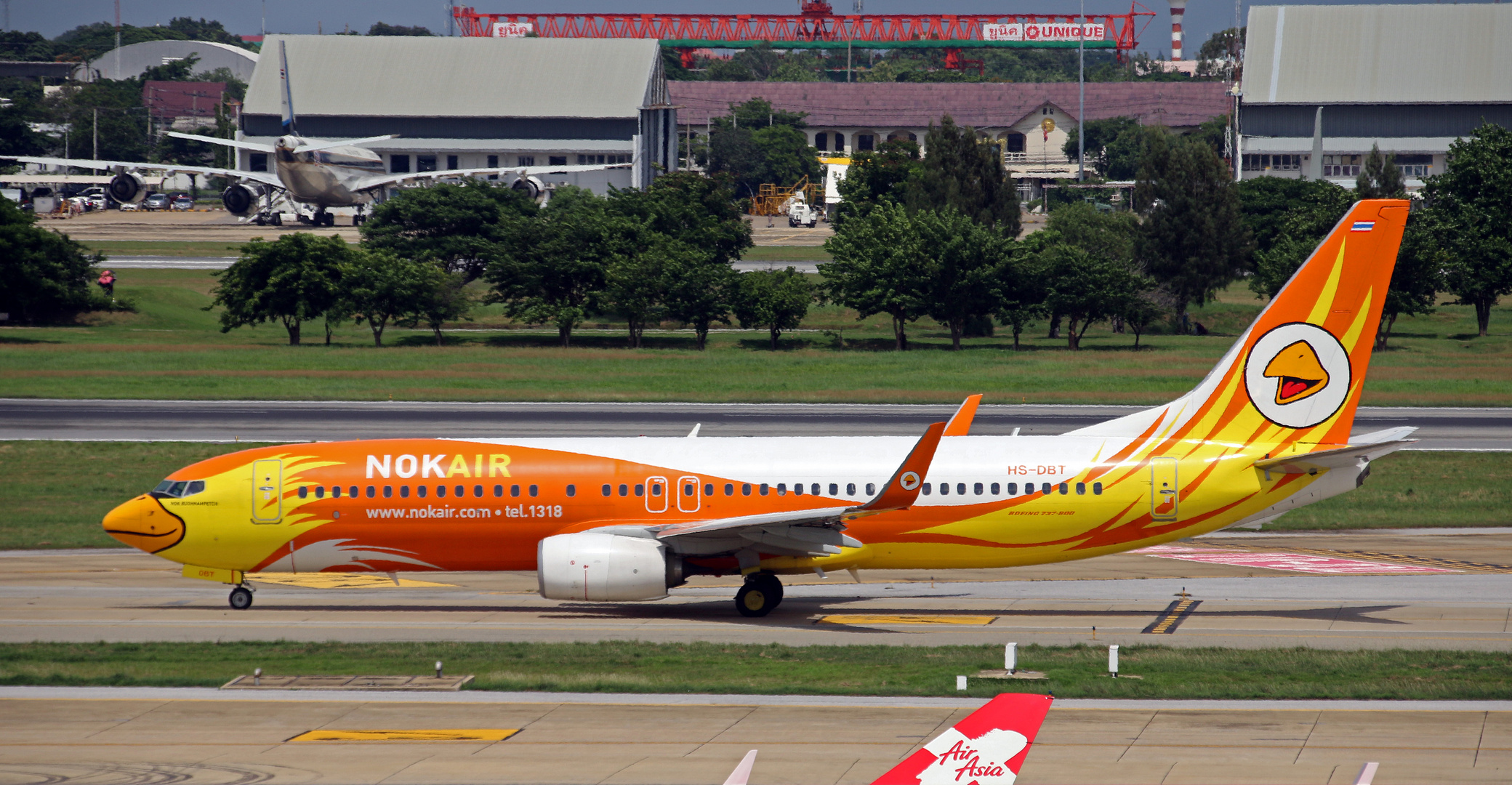
What is an Airline Livery? Discover Five Stunning Examples That Are Jaw-Droppingly Impressive!
Crucial to Effective Marketing
A typical aircraft livery is an airline’s unique design, colors, and markings that adorn its fleet of airplanes, serving not just aesthetic but also functional needs. Visual markings identify an airline brand and are crucial to effective marketing, helping distinguish a company’s airplanes while enhancing brand awareness. Liveries often include an airline’s logo and name, along with other unique and artistic graphic elements that improve product recognition and awareness.
Enhance Visibility and Identification
The origin of aircraft liveries has its roots in the early days of aviation. Long ago, aircraft were painted in simple, practical, and unassuming colors intended to enhance visibility and ease identification. It was not until the 1st World War that military aircraft began displaying more elaborate and intricate designs, in many instances to show squadron allegiance or for psychological impact on the enemy during combat engagement.
Create a More Recognizable Airline Brand
Post-war commercial aviation took these concepts next level, as airlines began adopting distinctive and more complex colors, patterns and markings to entice passengers and create a more recognizable airline brand and image. An aircraft paint scheme is also sometimes tasked with showcasing the proud history of a country’s homeland. Then, during the golden age of air travel in the 1950s and 60s, a significant evolution in airline liveries happened.
Opulence and Exotic Travel Destinations
Airlines began to utilize bolder, brighter colors and more artistic and detailed designs, better reflecting upon national pride or regional identity. For example, Pan Am’s iconic “blue globe” logo design, along with the vibrant red markings of TWA, became synonymous with opulence and exotic travel destinations. This period in aviation history also witnessed the introduction of creative and clever marketing strategies, where livery art was used to tell a story or trigger a desired consumer response towards commercial air travel.
Experimenting With Wrap-Around Artwork
As airlines evolved and technology moved forward, so did the complexity of airplane livery art. The introduction of larger jet powered aircraft allowed for greater fuselage surface areas to be painted, leading to even more creative possibilities. Next, airlines began experimenting with wrap-around artwork, intricate detailed patterns, and even working into the mix relevant cultural themes that resonated the best with passengers.
Advancements in Aircraft Painting Technology
Today, in our modern era of flight, aircraft liveries continue to mature and impress, driven by branding and marketing strategies and advancements in aircraft painting technology. The use of state-of-the-art digital design tools and computers enables airlines to showcase more complex and visually stunning liveries than ever before. As a bonus, some airlines are incorporating eco-friendly practices, using paints and materials that minimize environmental impact.
Easier Airplane Identification and Greater Safety
Liveries are not just about good-looking airplanes; they also play a crucial role in safety and regulation. Carefully selected color patterns serve to enhance visibility, especially during takeoff and landing. In addition, regulatory agencies frequently publish guidelines regarding markings crafted for easier airplane identification and greater safety. While there are a variety of aircraft paint designs found worldwide, a handful of liveries stand out from the crowd with their custom and unforgettable uniqueness.
Better Brand Awareness
Below, we have compiled a short list of some of the most dramatic and eye-catching painted aircraft exterior designs or liveries. The expense and effort that goes into each design is considerable. Using an aircraft fuselage as a massive blank canvas to improve brand awareness typically costs between $75,000 and $300,000, depending on the size of the aircraft and the complexity of the design. Without further delay, here are some of the best past and present most remarkable airplane exterior works of art:
Qantas Airways
Qantas Airways, established in 1920, is Australia’s flagship national airline and one of the world’s oldest continuously operating air carriers. Originally known as Queensland and Northern Territory Aerial Services, it provided flights to many remote regions. Over time, Qantas grew its international presence, becoming trusted for its reliability and safety. The airline connects Australia with the world, providing a truly memorable travel experience. Qantas features an extensive domestic and international route network, premium lounges, and the world-class Qantas Frequent Flyer program. Its iconic “kangaroo logo” highlights an ingrained connection with Australia, making Qantas a highly competitive worldwide carrier and a symbol of Australian pride and global reach.
Qantas Airways boasts a signature paw-less kangaroo on the vertical stabilizer of each aircraft. The airline also showcases Aboriginal culture delivering engaging stories to the entire world with its attractive Flying Art series. As far back as the early 1990s, the airline has adorned its fleet with highly artistic and unique liveries. Perhaps the airline’s most stunning airplane paint schemes are credited to this innovative Flying Art series. One example is the Qantas Dreamliner art created by Emily Kame Kngwarreye. This striking livery is inspired by 1991 artwork ‘Yam Dreaming’, brought to life by the late artist, Emily Kame Kngwarreye.

Fiji Airways
Fiji Airways first took flight in 1951 as Air Pacific, rebranding in 2013 to reflect upon its proud Fijian heritage and its dedication to connecting the island nation with the rest of world. Based in Nadi, the carrier maintains a network of international and domestic routes, serving destinations throughout the Pacific, Australia, New Zealand, as well as the United States. The company’s goal is to deliver a completely unique Fijian in-flight experience, emphasizing friendliness, hospitality, and cultural diversity.
It strives to inspire travel to exotic Fiji while offering premium in-flight services aboard modern commercial aircraft. Fiji Airways is driven to share the Fijian culture through an outstanding flying experience, delicious local onboard cuisine, and world-class airline services. With a commitment to sustainability and community engagement, Fiji Airways connects cultures from across the globe, while at the same time promoting a rich heritage of the beautiful Fijian islands.
The airline commissioned respected Fijian Masi Artist Makereta Matemosi to produce an iconic Fijian identity that effectively succeeds in showcasing the proud island nation and its people. The renowned artist created three traditional Masi motifs for the carrier’s fleet. Prominently displayed on the vertical stabilizer of each airplane, the unmistakable Teteva symbol conveys the genuine warmth of Fijians with their generous and friendly nature. The Rova motif, displayed on each engine nacelle, embraces the warm greetings Fijians extend to all who arrive, while the Makare motif, draping the border of the Teteva on the same tail fin, signifies the tranquility of the crystal-clear waters of Fiji’s stunning white sandy beaches.

Brussels Airlines
Brussels Airlines came onto the world scene in 2006, resulting from the merger of SN Brussels Airlines and Virgin Express, effectively becoming Belgium’s flagship airline. It has the pivotal role of connecting Europe with Africa, showcasing Belgium’s historical ties to the continent. The airline is unique in its dedication to sustainable airline operations, utilizing eco-friendly practices, and supporting environmental initiatives. The air carrier highlights Belgian culture through its smart branding practices, showing off a detailed and colorful livery on each aircraft that celebrates the country’s proud heritage. Its hub at Brussels Airport facilitates a variety of international connections, making it an integral part of the European aviation landscape. With a strong focus on Belgian cuisine and warm hospitality, travelers get a true taste of the local culture.
The Brussels Airlines livery is unique due to its vibrant “Belgian Icons” design, which reflects colorful motifs inspired by world-famous Belgian elements, including chocolates, waffles, and comic characters like Hergé’s comic hero Tintin. Bold and vivid colors include red, yellow, and black, mimicking the national flag and presenting a sense of national pride and identity. Each airplane boasts unique artwork, celebrating Belgium’s artistic nature and creativity.
Truly striking artwork makes the fleet visually amazing, in essence turning each fuselage into an airborne canvas, greatly enhancing the travel experience. Equally impressive, surrealist painter René Magritte draws inspiration from the Smurfs, the national football team known as “The Red Devils,” and the music festival Tomorrowland. These local hallmarks have been selected by Brussels Airlines for the exterior of every aircraft as well as even inside the cabin.

EVA Air
EVA Air, originally formed in 1989, is Taiwan’s second-largest air carrier. It began flying cargo and then quickly evolved into carrying passengers, gaining recognition for its impressive inflight services and outstanding safety standards. Taiwanese hospitality and world-class international service has helped EVA Air stand out in a highly competitive aviation market. One of the carrier’s distinctive features is its innovative and unique themed aircraft livery, such as the popular and easily recognizable Hello Kitty jets, which offer a whimsical and fun travel experience. The airline is also respected for its dedication to sustainability, implementing eco-friendly practices, and operating an ultra-modern, fuel-efficient fleet.
EVA Air has consistently received exceedingly high ratings for top-notch customer service and cabin comfort, particularly in its Premium Laurel Class, which delivers an exceptional travel experience. Its extensive network connecting Asia with North America and Europe, along with its dedication to excellence, makes EVA Air a preferred choice among seasoned travelers across the globe. Notably, an entire portion of its fleet is devoted to the Hello Kitty theme. This includes two Boeing 777s, three Airbus A330s, and two Airbus A320s. The Hello Kitty experience even extends into the cabin, creating a fully immersive experience.
EVA Air consigned Japanese artist Sanrio to create a group of seven Hello Kitty jets. The project included custom designed headrests, passenger pillows, airsickness sacks and even lavatories featuring Hello Kitty characters. There is even Hello Kitty themed food served aboard some flights.

Nok Air
Nok Air began flying in 2004 and is a low-cost Thai airline known for its uniquely stunning branding and signature bird-themed logo. Initially a subsidiary of Thai Airways, it was created to offer affordable travel options to growing domestic tourism demands. The airline’s name, “Nok,” translates to “bird” in Thai, reflecting upon its playful tone and commitment to low-cost travel. Nok Air is unique in its focus on delivering a fun and friendly inflight experience, often incorporating whimsical designs and creative marketing themes. The airline boasts a fleet of Boeing B737s, connecting hub cities and popular tourist-stops throughout Thailand. Nok Air delivers on the promise of excellent customer service, with cabin crew trained to create a welcoming atmosphere. A vibrant presence, combined with low fare pricing and a focus on Thai culture, has secured the carrier’s place in the competitive Thai airline industry, appealing to both cost-conscious travelers and those in search of a cheerful inflight experience.
